
Original Link: https://www.anandtech.com/show/2749
Introduction
Our last look at iBUYPOWER was with a fully loaded quad-core system and Triple SLI 8800 Ultras. Today we're looking at a different tier system, a Gamer Paladin F860-a that falls into the upper midrange bracket.
iBUYPOWER - Overview
We spent some time looking into the company, website, ordering process, and so on in our previous review. Reseller Ratings has a score of 8.49/10 for the last six months, and 7.16/10 lifetime, which is reasonably good (but as we've said before, reading the actual customer comments is often more helpful than the raw scores).
We found that their profit margins were very low (i.e. good value for the consumer), but as is so common with suppliers of this sort, it's difficult to provide a high level of personal attention and uniqueness that high-end buyers often look for. However, for mid- and entry-level systems, value often takes the forefront, and in this arena we think that low-margin suppliers particularly shine.
Specifications
| iBUYPOWER Gamer Paladin F860-a | |
| Processor | Intel Core i7-940 2.93GHz |
| Motherboard | Asus X58 P6T Deluxe |
| Memory | 6GB Corsair DDR3 |
| Video Card | ATI Radeon HD4870 1GB |
| Power Supply | NZXT PP-800 800 Watt |
| Case | Coolermaster HAF (High Air Flow) 932 |
| Hard Drive | 1 TB SATAII Samsung HD103UJ |
| OS | Vista Home Premium 64-bit, SP1 |
| Removables | Memory Card Reader |
| DVD Burner | LG Blu-ray/HD-DVD ROM DVD+/-RW SATA LG 22x DVD+/-RW PATA |
| CPU Cooler | Intel Core i7 Stock HSF |
The Paladin F860-a we received has a nice mix of components for a midrange system. Sticker price is $1975 before shipping, a good price point for an "upper midrange" computer, though definitions vary as components get ever cheaper. The power supply is definitely oversized, but this does allow room for expansion - a lot of room.
Exterior
Our last system from iBUYPOWER was simply shipped in the case box, without any identifying logos of any kind. We're pleased to see that they've fixed that with a nicely branded shipping box.

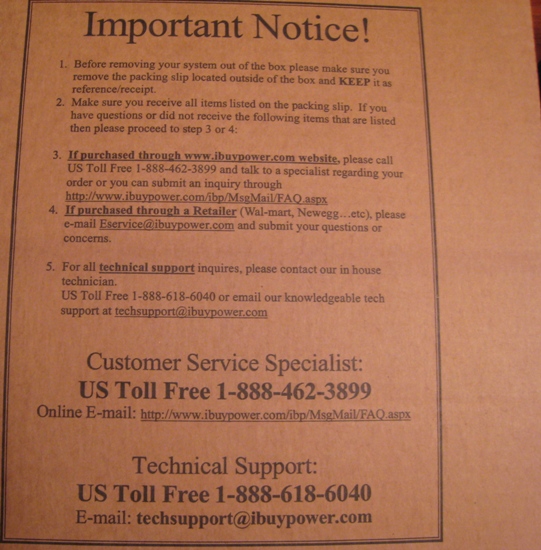
Prominent Tech Support info; we love that.
There are no handles on this box either. We're not sure why they're so hard to come by, but it wasn't that cumbersome.
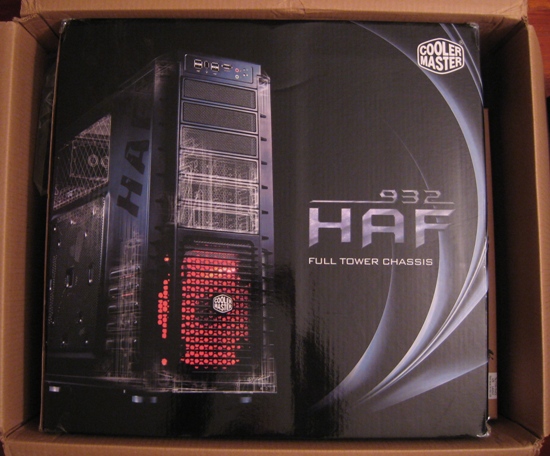
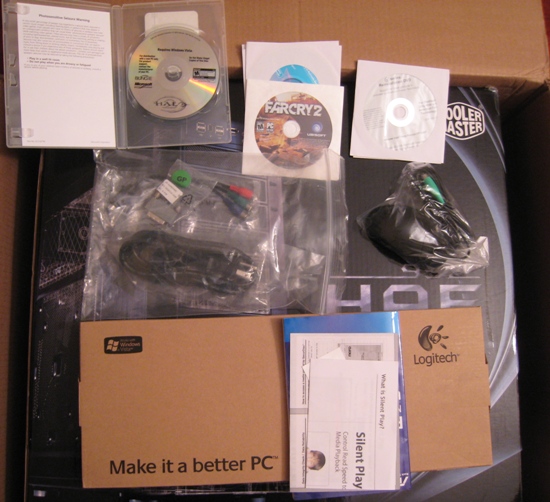
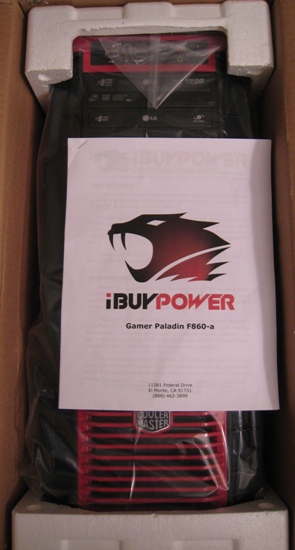

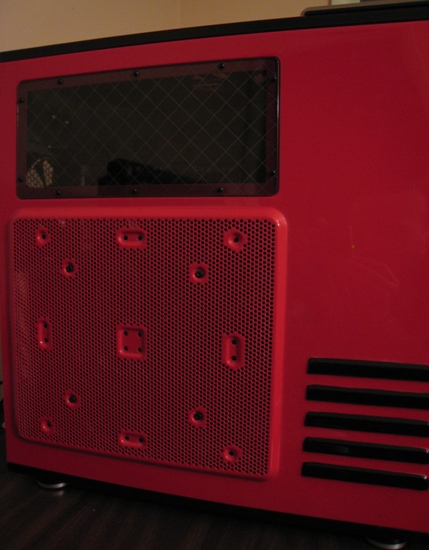
Yup - that's a huge fan on there.
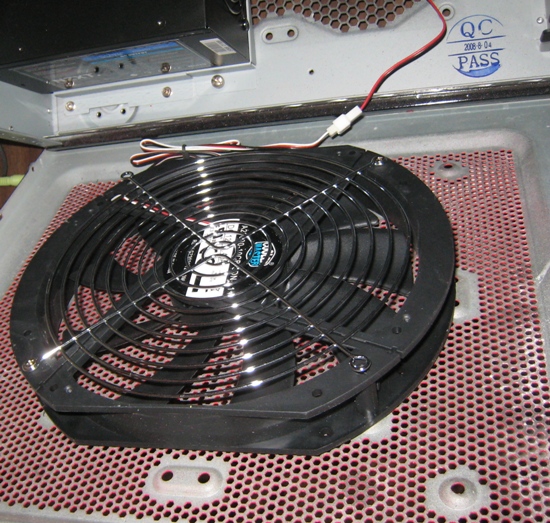
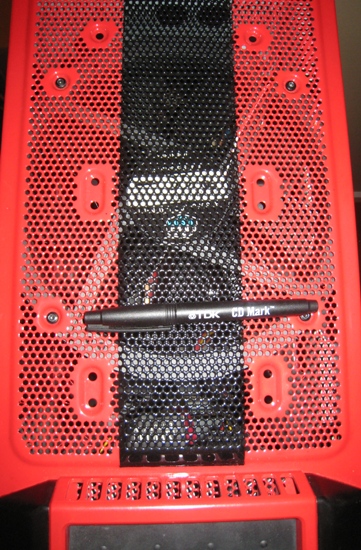
And another one on the top.
As always, the look of a case is a very subjective judgment, and while the HAF 932 is definitely large, we think it looks pretty decent. There is no identifying "iBUYPOWER" logo anywhere, just the Cooler Master badge, so if you are one of those car owners that removes all of the dealer logos and hangs your Audi badge in your bedroom, this one may be right for you.
Interior
Two thumbscrews on the side panel allow tool-free access to the internals.
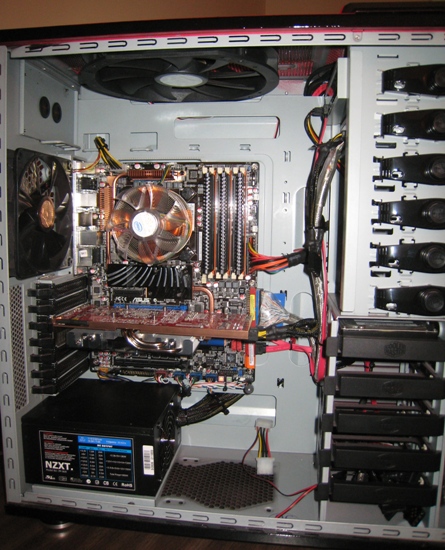
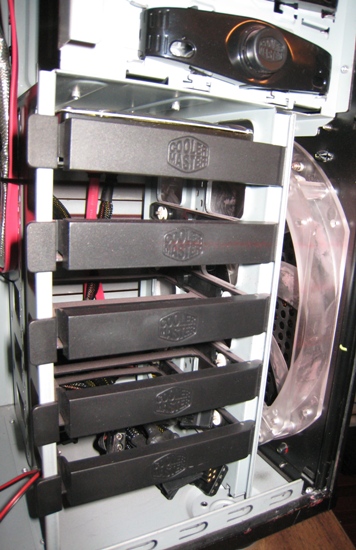
What's that in the front? That's right… another fan.
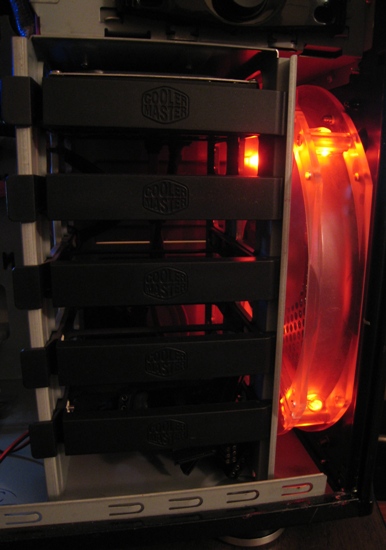
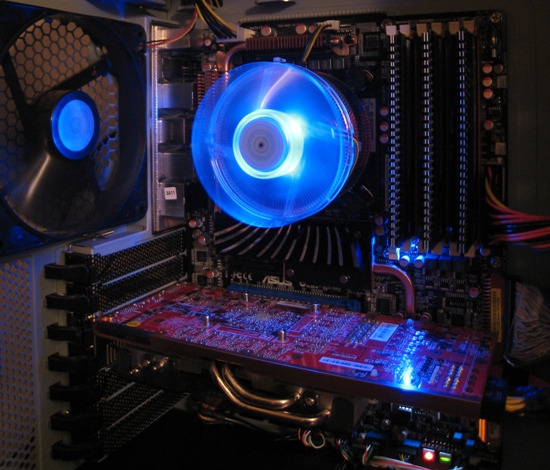
Blue heatsink fan, red front fan…
There are some massive (230mm) fans on this case, and they suck a ton of air while remaining very quiet. We're quite impressed with the airflow capability of this case, though it is necessarily large to make this possible. The cabling is nothing special but pretty decent, with zip ties here and there to keep things tidy.
Setup and Startup
Next, let's have a look at the BIOS.
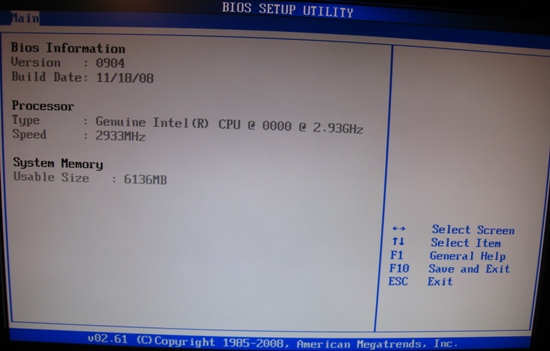
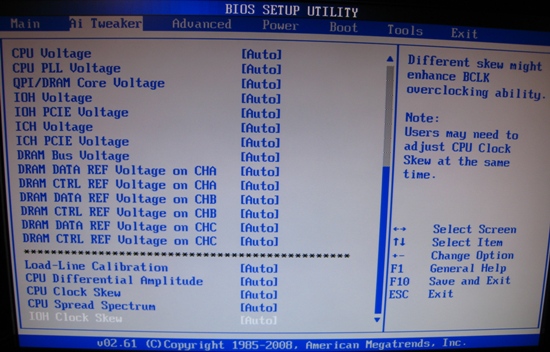
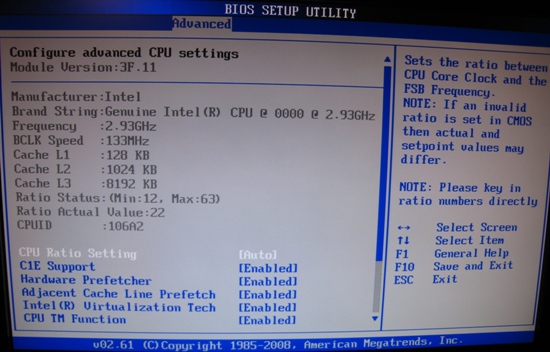
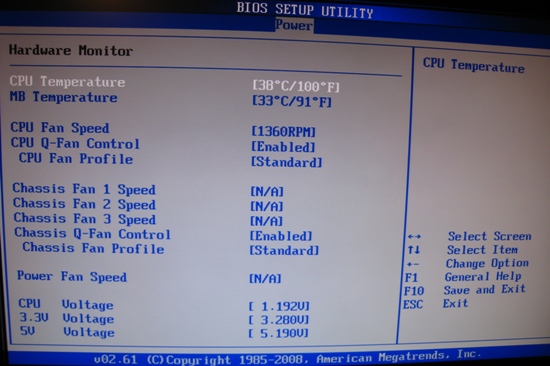
There's nothing unusual here, with all settings at Auto. The first boot is pretty normal.
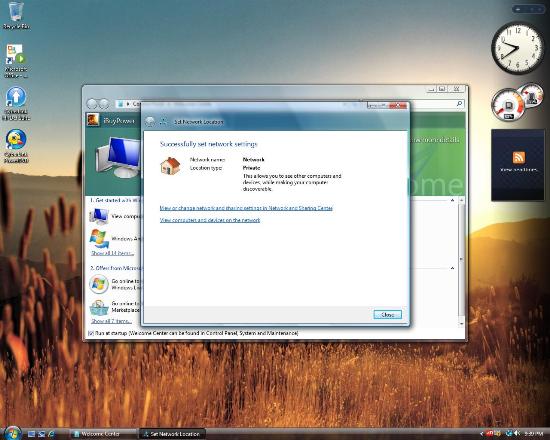 |
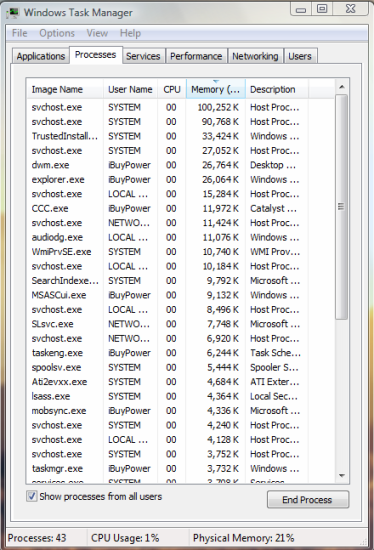
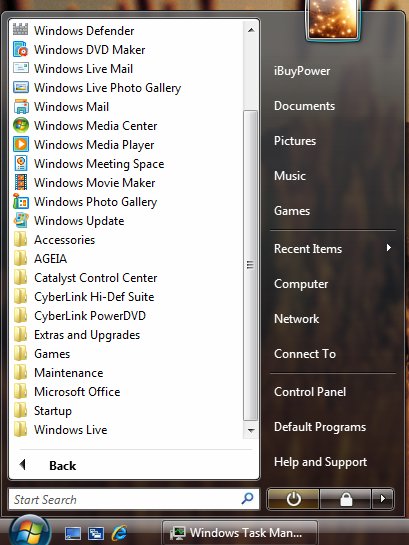
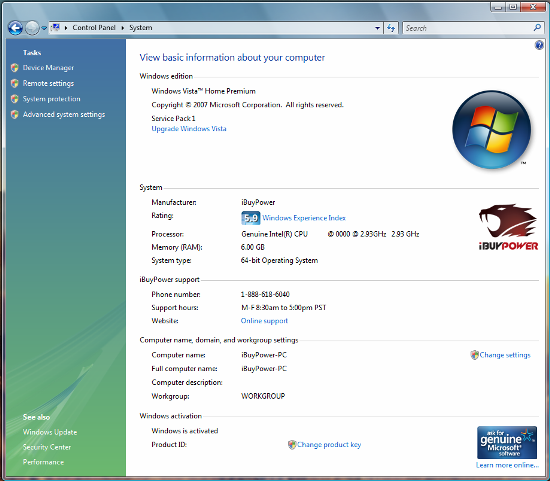 |
The software side of the system is generally clean, without a lot of bloatware. There are 43 processes running, which is about average, and all of the support information is listed prominently. Windows Update is turned on and set to automatic, which we dislike seeing on a gaming machine. The video card drivers were up-to-date at the time of shipping (8.11), and the system was tested at that revision throughout except for Far Cry 2, which was tested with the latest 9.4 drivers.
CINEBENCH R10
CINEBENCH places a heavy load on the CPU during the rendering tests, and can utilize a single CPU or multiple cores. The video subsystem has no bearing on the CPU rendering portion of this benchmark.
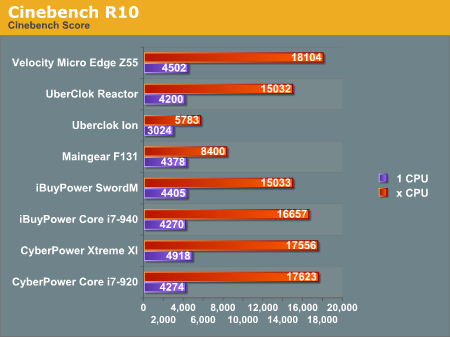
There's no denying that CINBENCH loves the Core i7; it performs incredibly well for rendering. Performance here is good but lags behind some of our other Core i7 systems (including an i7-920) with higher than stock base clocks.
PCMark Vantage
Our new standard for general platform performance is the PCMark Vantage suite that provides a wide series of tests, some of which focus on the CPU while others also utilize the video subsystem, and include digital photo manipulation, webpage loading, video transcoding, High Definition content playback, and so forth.
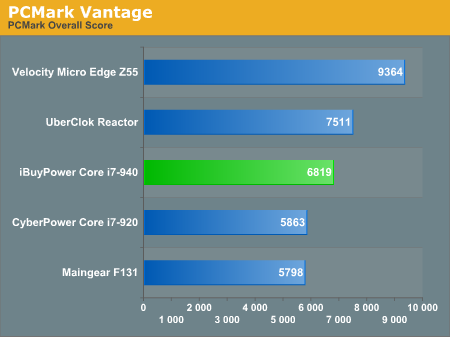
The Paladin does well here, scoring in the middle of the pack. In our look at the CyberPower system, we said that the WD "Green" hard drive was the main component holding back performance. This system scored very similarly to that one in most individual areas, with a large (1200 point) increase in the Hard Drive suite, raising the composite score as predicted.
SPECviewperf 10
Though these systems are intended for gaming, often the high-end hardware is useful for other purposes as well, such as CAD, artistic rendering, and medical software (though purists will tell you that professional graphics solutions are the only way to ensure that the driver packages will be completely accurate and stable). SPECviewperf is a set of benchmarks that measure the OpenGL performance of packages such as 3D Studio Max, Pro/Engineer, Solid Works, and other professional applications used daily by many individuals and companies. The software is free to download and test on your own system, but running all the tests will take several hours to complete. We ran all tests at a resolution of 1280x1024, and highlight two of these in our comparison chart.
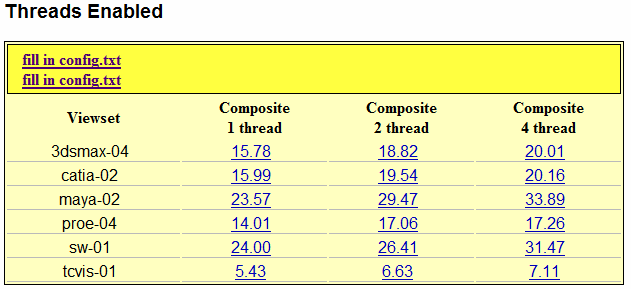
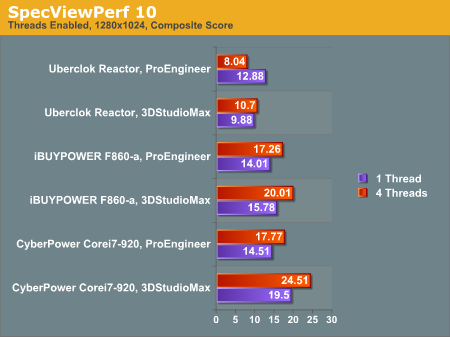
Results can also be compared at the SPECviewperf website. We see the Paladin do much better than the Reactor due to the Core i7's rendering performance, but in turn it's handily beaten out in 3D Studio Max by the CyberPower system due to its higher GPU horsepower.
3DMark Vantage
As we mentioned in previous reviews, 3DMark Vantage has replaced 3DMark06 in our test suite, and though the new payment scheme is inconvenient, it is still user reproducible. Vantage runs on Windows Vista only, and has four different default test settings: Entry, Performance, High, and Extreme.
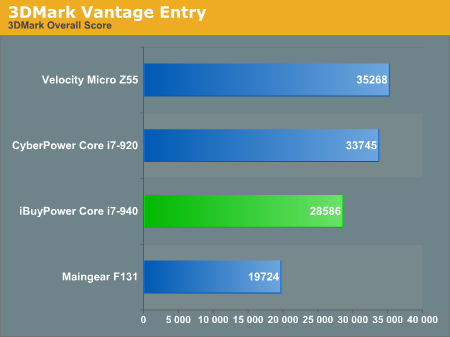
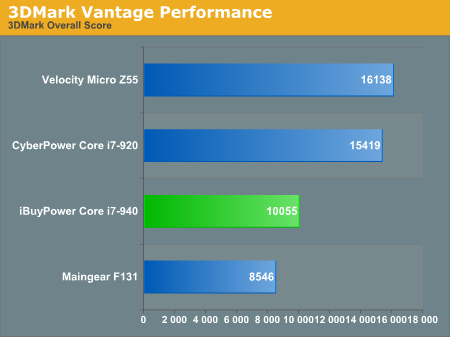
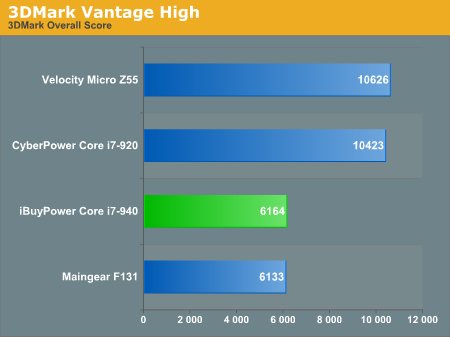
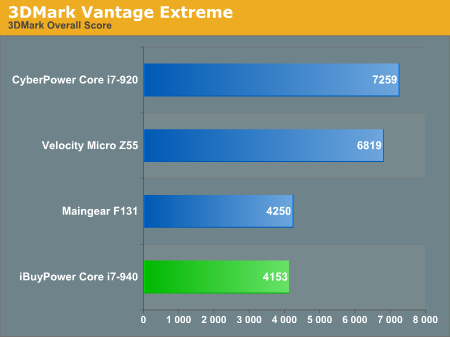
The Gamer Paladin is only equipped with one HD 4870, and it simply can't keep up against systems with twice the GPU power like the CyberPower and the Edge Z55. The Maingear F131 (a Core2 Duo E8400 at 4.0 GHz with an NVIDIA GTX 260) matches the Paladin at High and Extreme levels where the GPU becomes the overriding bottleneck.
Crysis
Crysis is getting old, but it still stresses even the most recent PC hardware. This demo has two built-in benchmarks in the "bin32" folder, one "CPU" and the other "GPU". We ran all benchmarks three times, discarding the first result and averaging the other two. We ran all tests at "High" quality unless otherwise specified.
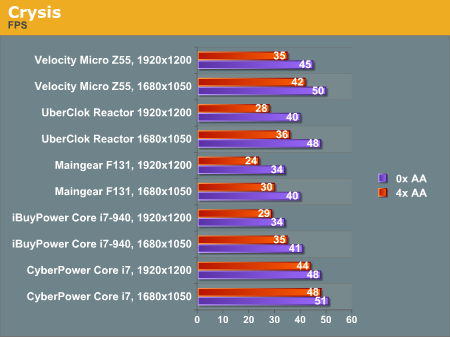
As indicated in 3DMark, we see the F131 and the Gamer Paladin neck and neck at high resolution without any anti-aliasing. However, with 4XAA enabled, the Paladin takes a solid lead. The CyberPower system has an HD 4870X2 2GB card, so comparing those results to the Paladin along with Derek's excellent article on two-GPU options should give a good feel for the performance boost possible with a GPU upgrade or SLI configuration.
Far Cry 2
Far Cry 2 is a new addition to our test suite. It's a fun game with great ratings, and has a fantastic built in benchmarking tool (located in the "bin" folder with the executable, or right-click on the shortcut in Games Explorer and select "Benchmark"). We've chosen to run our system tests with the reproducible settings shown below:
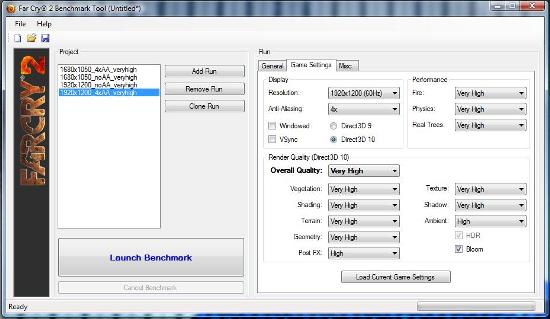 |
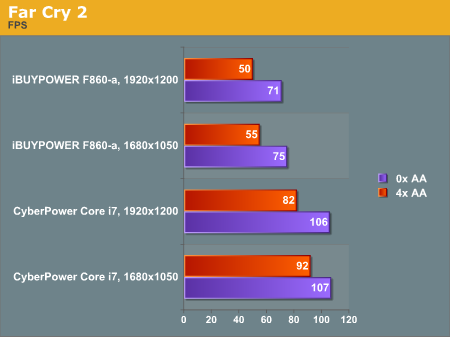
Far Cry 2 has good performance scaling in general, and AMD's new drivers have significantly improved stability and performance. The system is very playable at 1920x1200, but is completely trounced in the numbers by the CyberPower system.
Power
We measure power consumption using a Kill-A-Watt device at the wall outlet. Idle indicates a measurement taken in Windows with no applications running. Max indicates the maximum power draw with the system fully loaded (running eight instances of Prime95 plus 3DMark Vantage simultaneously). We've also indicated power draw with just the CPU loaded.
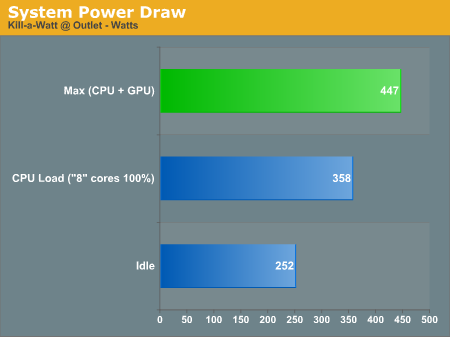
Results here are good, and remember that these numbers are measured at the outlet, so power supply efficiency comes into play. The 800W power supply is clearly overkill in this system, but we will not fault this too much as it allows for expansion with headroom to spare.
Noise
We measured noise with a sound level meter, at distances of 24" and 48". For reference, ambient noise was approximately 37.5 dB(A).
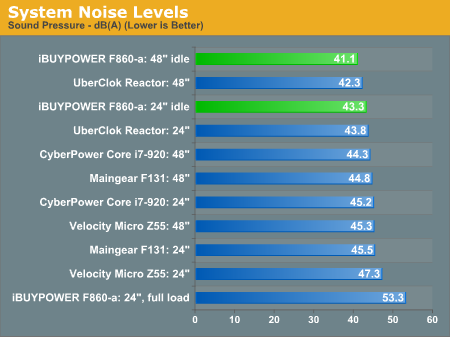
Results here are very good, aided by the incredibly quiet 230mm fans in the Cooler Master case. The CPU cooler is the primary source of noise, closely followed by the video card. A water cooling solution would make this system almost silent while maintaining high airflow. We did experience intermittent noise coming from the backplate of the motherboard, however. It sounded like a zip tied cable routed behind the side panel that would rattle against the motherboard tray. This was annoying and significantly added to the noise when present (about 2.5 dB(A) increase at 2 feet).
Temperature
We utilized CoreTemp 0.99.4 to measure CPU temperatures, which has incorporated the latest TjMax values for Intel processors. We loaded each core with Prime95 and ran 3DMark Vantage in the background.
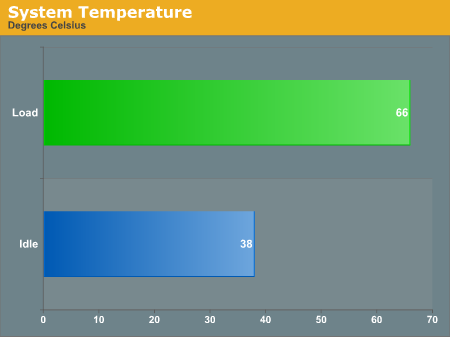
The stock Intel HSF has never been renowned for its performance with the Core i7 processor line, but it's aided immensely by the airflow of the Cooler Master 932 case. As a result, it manages to stay reasonably cool at 2.93 GHz, but there isn't much margin here to overclock. We recommend a different cooling solution, particularly with the combination of this case, to allow for better temperatures and overclocking headroom.
Problems
The iBUYPOWER Gamer Paladin F860-a had only a few minor problems during our testing period. The system was very stable and would complete hours of testing without issues. We upgraded the video drivers to 9.4 to avoid problems when testing Far Cry 2. In the noise section we mentioned the intermittent rattling that seemed to be coming from a zip tied cable routed behind the backplate, which was annoying when it occurred. These cables should be secured to avoid this. We also experienced a couple of issues with the LG DVD±RW. First, we had a read issue on one of our discs, where Autoplay would not work but instead would flag the following prompt:
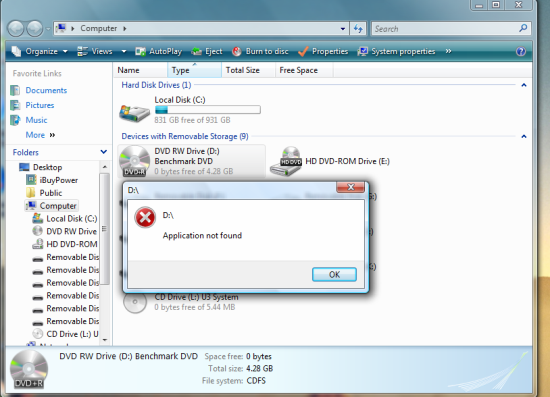
Manually exploring the disc was very slow, and the drive got very noisy while doing so. However, it worked fine on other burned discs and with pressed media.
While the system was stable and ran games flawlessly, the above are big issues when it comes to customer perception of quality, and should be addressed. Also, just as we mentioned with CyberPower, iBUYPOWER offers so many choices in their configurations that the customer must take care to order a balanced solution. An uninformed buyer can order the Gamer Paladin F860-a with an ATI HD 3450 (crippling its performance), and the "Help me Choose" only lists specifications and gives no indication whatsoever of the kinds of performance sacrifices or gains of the various cards. Choice is great, but we'd like to see a few "Recommended" cards or a better explanation of how the video card choice will impact this "gaming" system. If it has Gamer in the name, it should be baselined to some minimum level of gaming performance.
Pricing
All of the components in this system price out for just about $1720 on Newegg.com. With a sticker price of $1975, iBUYPOWER has a margin of about 13% to cover a 3-year labor/1 year parts warranty, 30-day money back guarantee (not including shipping) and lifetime technical support. This margin is identical from the last time we looked at the pricing of one of their systems. This is a fairly reasonable markup for a preassembled system at this tier, but other companies are also cost competitive.
Final Thoughts
This is our second look at iBUYPOWER. For high-end systems, we recommended looking around at other suppliers, since they don't offer the "uniqueness" or handholding that buyers in that market enjoy. At the "upper midrange", we still find ourselves somewhat unimpressed. While the product is fairly solid with good component choices available, there's no single compelling factor that sells this system. The CyberPower Core i7-920 system outperformed this particular configuration in most areas for about $500 less. Both companies are very similar when it comes to warranty coverage limitations and customer service rankings (as well as product offerings, websites, etc. - they look like clones). We still feel iBUYPOWER is worth looking at for low- and mid-range systems, or higher end systems for more technical customers that want a prebuilt system at a low premium. However, if you're on the hunt for a low-margin prebuilt system, we continue to recommend competitively pricing out several suppliers prior to hitting that "Check Out" button. Choice is very good, so unless you're in a time crunch you may find a few extra hours of research can save you a lot of money.







